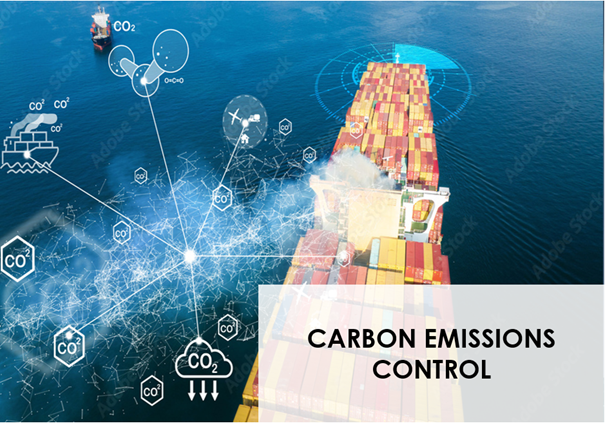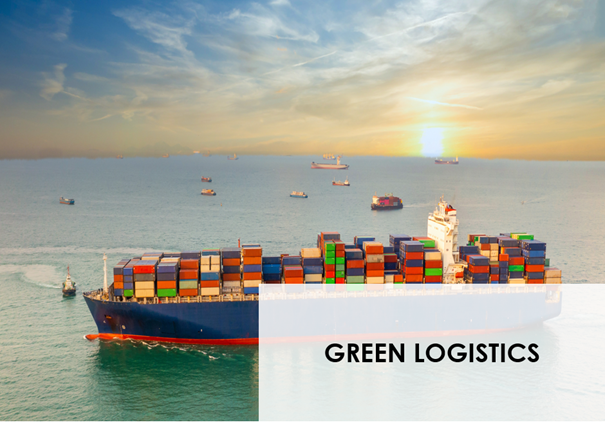In recent years, the international maritime shipping market has undergone significant transformative changes. As an integral part of global trade, it has responded to the urgent challenges of global climate change, leading to increased demand for carbon neutrality and emission reduction measures. With customers placing a greater emphasis on carbon emissions and eco-friendly transportation solutions, the entire international maritime shipping market has shifted its focus towards more sustainable operational solutions.

What is the European Union Emission Trading Scheme (EU ETS)?
The European Union Emission Trading Scheme (EU ETS) was introduced in 2005 and stands as one of the primary policy tools adopted by the European Union to address climate change and achieve carbon neutrality objectives. It ranks among the world's largest carbon markets, covering not only the 27 EU member states but also countries such as Norway, Iceland, and Liechtenstein. EU ETS encompasses various industries, including electricity, steel, cement, chemicals, logistics, and transportation. Consequently, logistics and freight companies are obligated to participate and shoulder responsibility for controlling their emissions to meet mandated emission reduction targets.
The scheme's goal is to drive reductions in greenhouse gas emissions to combat climate change. It achieves this objective by annually decreasing the total emission allowances, ensuring a gradual reduction in greenhouse gas emissions across Europe. This encourages companies to adopt more environmentally friendly technologies and methods to avoid incurring additional costs.

The core mechanism of the EU ETS is emissions trading. Within the system, the European Union establishes a specific quantity of emission allowances, representing the permitted emissions of carbon dioxide (CO2) and other greenhouse gases. These emission allowances are allocated to participating entities on an annual basis. Entities must possess sufficient emission allowances to cover their actual emissions. If an entity surpasses its allocated allowances, it faces fines. Conversely, if an entity’s emissions are lower than its allowances, it can sell surplus allowances to other enterprises, fostering economic incentives for emissions reduction.
This is part of proposals with the main goal of achieving the EU’s climate neutrality by 2050. Shipping lines are expected to surrender enough allowances to cover all their emissions. Under the mechanism described, the allowance acquisition will incur an added cost for shipping lines which will be applied as an additional surcharge for cost recovery purposes.
SEKO-BANSARD's Relationship with EU ETS
As a major international logistics and freight company, SEKO-BANSARD is committed to actively participating in carbon reduction initiatives. We recognize that in today's market, customer concern regarding carbon emissions has become a real consideration.

In addition, we help our customers calculate carbon emissions, explicitly highlighting that this reflects our commitment to more responsible and sustainable logistics. We encourage our customers to commit to measures to reduce their emissions, so that we can collectively work towards a greener future.
In light of the increasingly severe global climate change, the international maritime shipping market is undergoing transformation, with carbon neutrality and emissions reduction becoming inevitable trends. The European Union Emission Trading Scheme (EU ETS) plays a pivotal role in driving the logistics and freight industry towards greater sustainability.
SEKO-BANSARD is playing its part in this transformation by providing its customers with transport solutions that minimize carbon emissions (partnerships with committed maritime companies, participation in AFKLM's SAF program, investment in P400 trailers). We are convinced that by working together, we can collectively build a more environmentally friendly and sustainable future.
REF:
- European Commission. (2023.June). EU Emissions Trading System (EU ETS). Retrieved from https://climate.ec.europa.eu/eu-action/eu-emissions-trading-system-eu-ets_en.
- Bansard Group. (2022, November 30). OMI 2023 : Décarbonation des navires, tout ce que vous devez savoir ! Retrieved from https://www.bansard.com/fr/actualites/omi-2023-ce-que-vous-devez-savoir-sur-les-nouvelles-normes
- Bansard Group. (2021, October 20). RSE Approach [Démarche RSE]. Retrieved from https://www.bansard.com/fr/groupe/demarche-RSE.
- Contact us: sales@bansard.com



